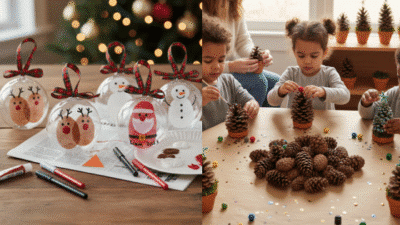Did you know that over 70 percent of homeowners tackle DIY home projects to express their personality? Creative home decor goes beyond matching colors or buying new furniture. It is about making every corner of your space feel special and uniquely yours. From revitalizing plain walls with creative paint to crafting your own decorative lighting, these fresh ideas can inspire you to transform everyday spaces and ordinary materials into something unforgettable.
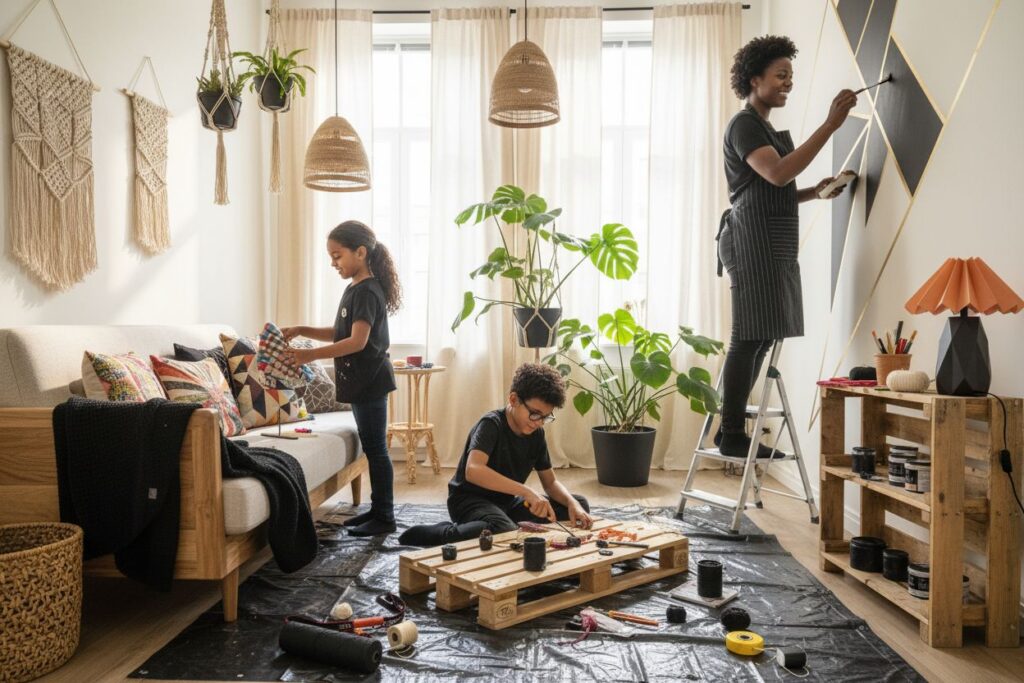
Quick Summary
| Takeaway | Explanation |
|---|---|
| 1. Prepare Walls Thoroughly Before Painting | Cleaning, priming, and using quality tools ensures a polished finish for your walls. |
| 2. Upcycle Everyday Materials into Art | Transform common items into unique art pieces, fostering creativity and sustainability without needing expensive supplies. |
| 3. Embrace Imperfections in Upcycled Wood | Unique textures and character in reclaimed wood add charm to shelving solutions, making them special and distinctive. |
| 4. Experiment with Fabric Dye Techniques | Use natural fabrics and safety precautions to create vibrant, personalized textiles through diverse dyeing methods. |
| 5. Design Multi-functional Storage Solutions | Combine aesthetic and practicality in storage projects, ensuring they complement your decor while enhancing organization. |
Table of Contents
- Refresh Walls With Custom Paint Techniques
- Create Unique Art Pieces From Everyday Materials
- Design Stylish Shelving With Upcycled Wood
- Personalize Soft Furnishings Using Fabric Dye
- Revamp Old Furniture With Simple Makeovers
- Craft Decorative Lighting For Cozy Ambience
- Build Functional Decor With Storage Solutions
1. Refresh Walls with Custom Paint Techniques
Transforming your living space starts with one of the most powerful design tools available: paint. Custom wall painting techniques can breathe new life into any room, turning bland surfaces into stunning visual statements that reflect your unique style and creativity.


Understanding wall painting goes beyond simply selecting a color. Proper technique matters significantly in achieving a professional looking finish. According to research from ClassX, preparation is key to creating walls that look polished and pristine.
Essential Preparation Steps:
- Clean walls thoroughly to remove dust and grime
- Use painter’s tape to protect edges and trim
- Apply primer to create a smooth base surface
- Select high quality brushes and rollers
When approaching your painting project, consider experimenting with techniques that add texture and visual interest. Ombre effects create beautiful gradients, while color blocking can define spaces dramatically. Stenciling offers another exciting way to personalize walls with intricate patterns or geometric designs.
Pro Tip: Always test paint colors with sample swatches first. Natural and artificial lighting can dramatically change how a color appears, so observe your sample at different times of day before committing to a full wall application.
For best results, work methodically. Start by protecting floors with drop cloths, then use painter’s tape to create clean edges. Apply paint in smooth, consistent strokes using a roller for large areas and angled brushes for precision work around corners and trim. Multiple thin coats always look better than one thick application.

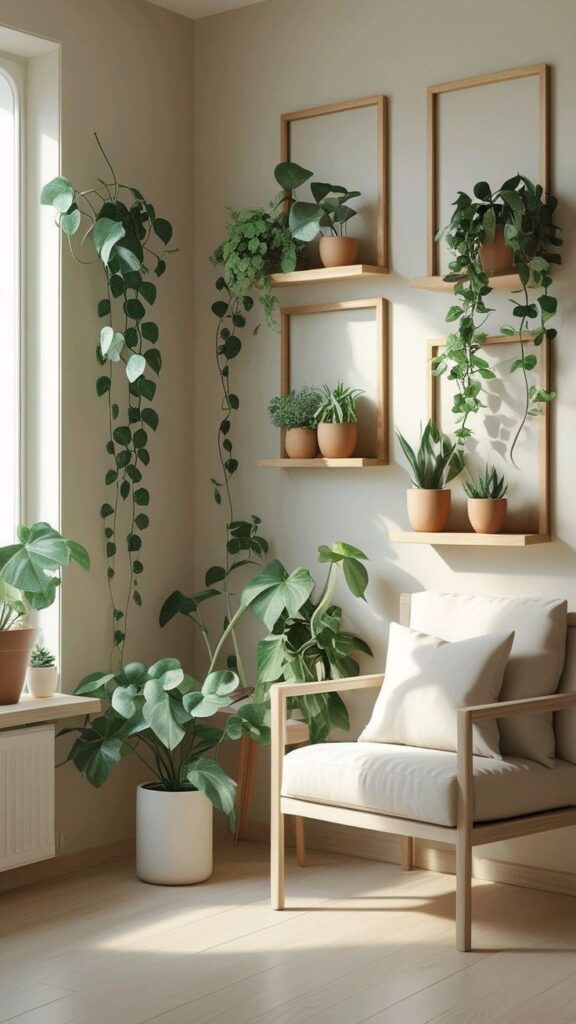
Remember that painting is both a skill and an art form. Take your time, enjoy the process, and don’t be afraid to experiment with different techniques that express your personal design vision.
2. Create Unique Art Pieces from Everyday Materials
Art doesn’t require expensive supplies or professional training. Your home is actually a treasure trove of creative potential waiting to be transformed into stunning visual masterpieces. According to research from DIY.org, upcycling everyday materials into artwork represents an incredible opportunity for sustainable creativity.
Creative Upcycling Principles:
- Look beyond an object’s original purpose
- See potential in discarded or overlooked items
- Experiment with unconventional materials
- Embrace imperfection and uniqueness
Imагine turning empty glass jars into luminescent candle holders or transforming old wooden pallets into intricate wall art. The key is viewing your surroundings with an artist’s perspective. Common household items like buttons, magazines, cardboard, and even kitchen utensils can become extraordinary art pieces with imagination and basic crafting techniques.
Material Transformation Strategies:
- Mason jars become stunning vases or pencil holders
- Broken ceramics transform into mosaic art
- Old books can create sculptural wall installations
- Wine corks work perfectly for textured wall hangings
Starting your creative journey requires minimal investment. Gather materials you already own and begin experimenting. Acrylic paints work wonderfully for adding color and texture. Simple tools like glue guns, scissors, and paintbrushes can help you bring your artistic vision to life. Drawing inspiration often comes from unexpected places when you approach creativity with an open mind.
Remember that art is about personal expression. There are no strict rules in transforming everyday materials. Your unique perspective and willingness to experiment will ultimately determine the beauty of your creation. Start small, stay curious, and watch ordinary objects become extraordinary artwork.
3. Design Stylish Shelving with Upcycled Wood
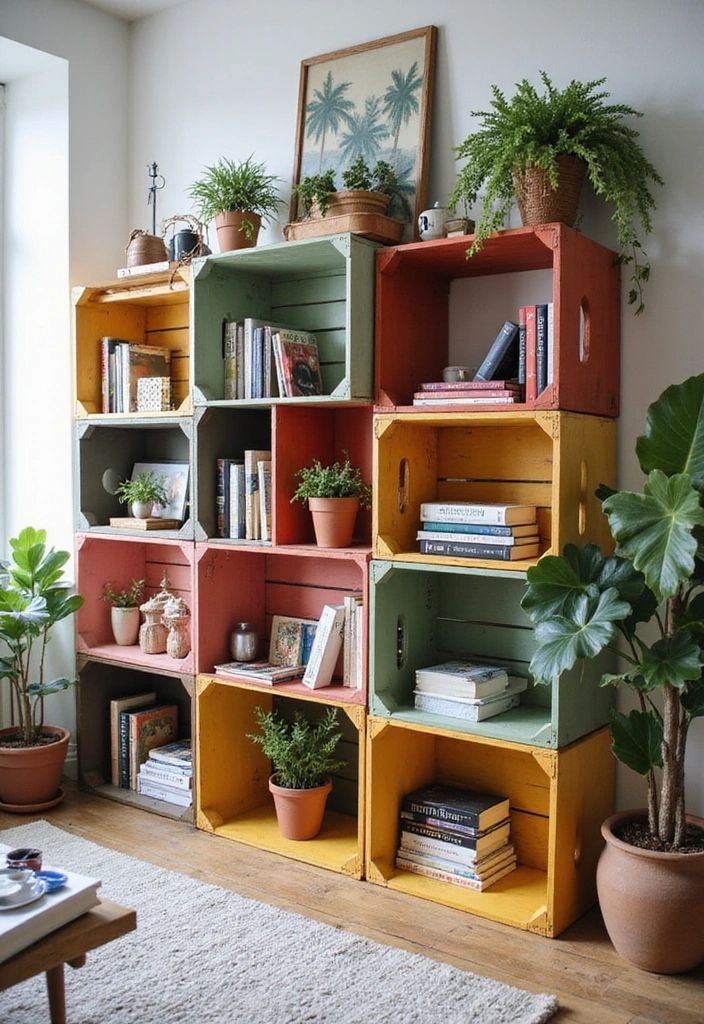

Turning forgotten wooden materials into stunning home storage solutions is more than a design trend its a sustainable approach to creating unique interior spaces. According to research from Wrahfh, reclaimed wooden pallets offer an incredible opportunity for crafting rustic and personalized shelving units that reflect your individual style.
Upcycling Wood Basics:
- Select sturdy wooden materials
- Clean and sand surfaces thoroughly
- Choose appropriate mounting hardware
- Seal wood for longevity
The magic of upcycled wood shelving lies in its ability to transform ordinary materials into extraordinary design elements. Old pallets, barn wood, or discarded furniture can become statement pieces that tell a story. Each knot, grain, and imperfection adds character and warmth to your living space.
Before starting your project, gather essential tools like a power drill, sandpaper, wood stain, brackets, and protective sealant. Wooden pallets work exceptionally well because they are readily available and often free. Look for pallets marked HT (heat treated) which ensures they are chemical free and safe for indoor use.
Preparation Steps:
- Inspect wood for structural integrity
- Remove any protruding nails
- Sand surfaces to remove splinters
- Apply wood conditioner before staining
Creating a bookshelf from upcycled wood requires careful planning. Measure your space precisely and design a shelving unit that complements your existing decor. Floating shelves work wonderfully for minimalist spaces while rustic ladder shelves add a touch of vintage charm.
Remember that imperfections are what make upcycled wood special. Embrace the unique textures, color variations, and occasional rough edges that tell the story of your materials origin. With patience and creativity, you can transform simple wooden scraps into a stunning functional art piece for your home.
4. Personalize Soft Furnishings Using Fabric Dye


Transforming plain textiles into vibrant personalized masterpieces is easier than you might imagine. According to research from Arts Trussville, fabric dyeing offers an exciting way to breathe new life into soft furnishings and express your unique creative vision.
Essential Fabric Dyeing Principles:
- Choose natural fiber fabrics
- Prepare workspace with protective coverings
- Select appropriate dye for fabric type
- Follow precise temperature guidelines
- Wear protective gloves and clothing
Fabric dyeing opens up a world of design possibilities. Whether you want to refresh tired throw pillows, revive an old bedspread, or create custom curtains, this technique allows you to completely reimagine your home textiles without purchasing new items. Natural materials like cotton, linen, and silk absorb color most effectively.
Materials You Will Need:
- Fabric dye
- Large plastic container
- Stirring utensil
- Hot water
- Salt (for color setting)
- White vinegar
- Protective gloves
Prepare your workspace by covering surfaces with plastic sheets and wearing clothing you do not mind getting stained. Read the dye instructions carefully as different fabrics require specific techniques. Ombre effects can be achieved by gradually dipping fabric at different depths, while solid colors require complete submersion.
For best results, prewash fabrics to remove any sizing or residue that might prevent even color absorption. Wear rubber gloves to protect your hands and work in a well ventilated area. Experiment with techniques like tie dye or gradient coloring to create truly unique pieces that reflect your personal style.
A pro tip: Always test your dye on a small fabric swatch first to understand how the color will develop. Fabric dyeing is part science and part art allowing you to transform ordinary textiles into extraordinary design statements.
5. Revamp Old Furniture with Simple Makeovers


Every piece of furniture tells a story and with a little creativity, you can transform forgotten pieces into stunning design statements. According to research from Common Good Ventures, upcycling furniture is not just about saving money its about reimagining potential and breathing new life into cherished items.
Furniture Makeover Fundamentals:
- Assess structural integrity first
- Clean surfaces thoroughly
- Choose appropriate preparation techniques
- Select complementary paint or finish
- Invest in quality tools
The key to successful furniture transformation lies in understanding the materials you are working with. Wooden pieces offer incredible versatility wood can be sanded, painted, stained or distressed to create entirely new aesthetics. Metal furniture can be powder coated while fabric covered pieces might benefit from reupholstering.
Preparing your workspace is crucial. Gather essential tools like sandpaper, primer, paint brushes, drop cloths and protective gear. Different surfaces require different approaches. Wooden furniture might need light sanding to create a smooth surface for painting while metal pieces could require rust removal and primer application.
Practical Makeover Techniques:
- Paint wooden chairs bright colors
- Add decorative stencil patterns
- Replace hardware for instant refresh
- Use chalk paint for vintage look
- Apply metallic accents for modern touch
Consider your existing decor when selecting colors and finishes. Neutral tones work well for versatile pieces while bold colors can create statement furniture. From Our Home Sweet Home, we learn that DIY furniture transformations can turn ordinary pieces into functional art.
Remember that imperfections tell a story. Not every piece needs to look factory perfect. Embrace small quirks that reveal the pieces history and your personal creative touch. With patience and imagination, you can turn forgotten furniture into treasured design elements that reflect your unique style.
6. Craft Decorative Lighting for Cozy Ambience

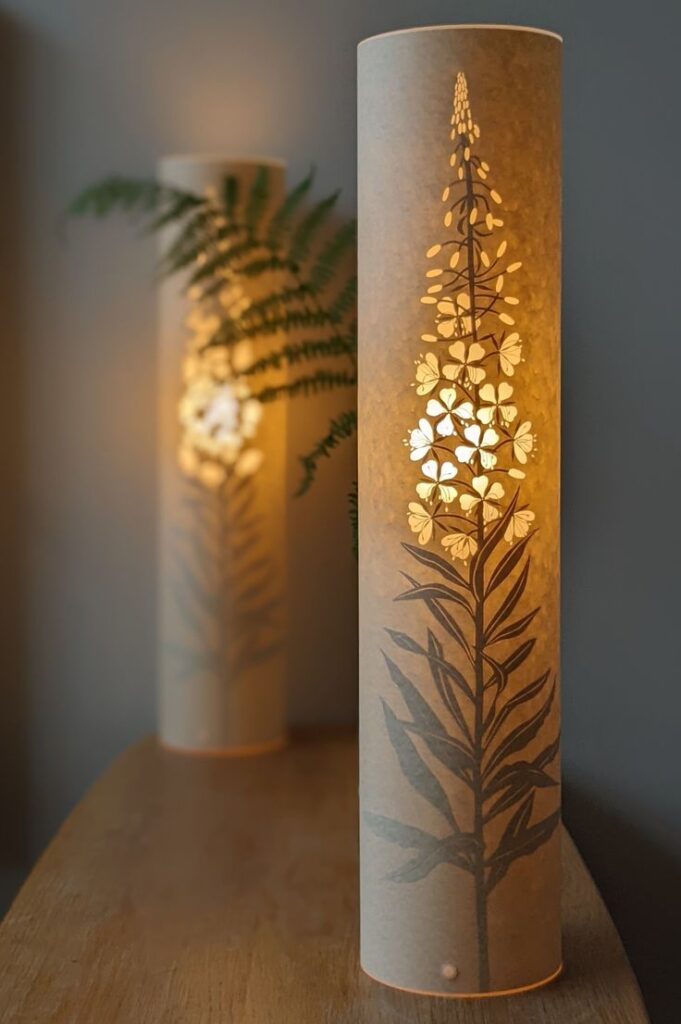
Lighting transforms spaces from ordinary to extraordinary creating emotional landscapes through illumination and shadow. According to research from Wrahfh, crafting your own decorative lighting allows you to design personalized ambiance that reflects your unique aesthetic and mood.
Lighting Design Essentials:
- Select appropriate light sources
- Consider color temperature
- Experiment with translucent materials
- Focus on layered illumination
- Prioritize electrical safety
Decorative lighting goes beyond mere functionality. It tells a story through soft glows, intricate patterns, and creative material choices. Mason jars, vintage containers, and unexpected objects can become stunning light fixtures that serve as conversation pieces and mood setters.
To begin your lighting project, gather materials like glass containers, wire, electrical kits, and creative embellishments. Tin can lanterns offer a rustic charm while paper lampshades provide delicate diffused light. Think about the overall atmosphere you want to create warm and intimate or bright and energetic.
Lighting Transformation Techniques:
- Create punched metal lanterns
- Design stained glass style shades
- Experiment with colored translucent materials
- Use fairy lights for soft illumination
- Incorporate natural elements like driftwood
From GIMV, we learn that DIY lighting projects offer incredible opportunities for personal expression. Consider the interplay of light and shadow experiment with positioning and materials to create depth and intrigue in your living spaces.
Remember that great lighting design is about creating feeling. Each handcrafted piece becomes more than just an illumination source its a personal artistic statement that transforms how you experience your home.
7. Build Functional Decor with Storage Solutions


Everyday spaces become extraordinary when storage meets creativity. According to research from Wrahfh, transforming ordinary materials into functional decor allows you to maximize space while expressing your unique design vision.
Storage Design Principles:
- Prioritize multipurpose functionality
- Use vertical space effectively
- Select materials that complement decor
- Consider weight and structural integrity
- Design with future adaptability
Functional storage is an art form that balances practicality with aesthetic appeal. Wooden pallets become stunning wall mounted shelves while vintage crates can transform into rolling storage units with just a few strategic modifications. The key is seeing potential in unexpected materials and understanding how to reimagine their purpose.
Before starting your project, assess your specific storage needs. Some spaces require compact solutions like floating shelves while others might benefit from larger mobile units. Measure your available space carefully and sketch out potential design concepts before gathering materials.
Creative Storage Project Ideas:
- Convert wooden pallets into wall shelves
- Build rolling storage carts from reclaimed crates
- Create hanging rope shelves
- Design under stair storage units
- Construct modular cube storage systems
From GIMV, we learn that DIY storage solutions offer incredible opportunities for personalization. Professional looking results come from careful planning precise measurements and selecting appropriate mounting hardware.
Remember that great storage design is about solving problems beautifully. Each handcrafted piece should feel like a natural extension of your living space integrating seamlessly while solving organizational challenges. Your storage solutions can be both practical and stunning visual statements that reflect your personal style.
Below is a comprehensive table summarizing key strategies and techniques for creative home transformations, focusing on using everyday materials, painting, and upcycling.
| Project | Technique/Steps | Benefits/Outcomes |
|---|---|---|
| Refresh Walls with Paint | Clean, tape, prime; use quality tools; experiment with techniques like ombre or stenciling. | Professional finish, personalized style, adds texture. |
| Create Art from Materials | Repurpose objects; use jars, pallets, ceramics for art. | Sustainable creativity, unique artwork. |
| Upcycled Wood Shelving | Select sturdy wood, clean, sand, seal; use pallets. | Custom storage, rustic charm, eco-friendly. |
| Personalized Fabric Dye | Choose natural fibers, follow temp guidelines; prewash fabrics. | Vibrant designs, revitalized textiles, personal expression. |
| Furniture Makeovers | Assess condition, clean, sand, paint, or stain; add stencils. | Cost-effective, refreshed pieces, tell a story. |
| Decorative Lighting | Use glass jars, wire kits; experiment with materials. | Customized ambiance, artistic statement. |
| Functional Storage Design | Use pallets, vintage crates; assess space needs. | Practical organization, integrates with decor. |
Bring Your DIY Vision to Life with Skyrye Design
Are you feeling inspired by these 7 creative DIY home decor ideas but unsure where to start or how to bring your own spin to your living space? The challenges discussed in this article—from finding unique upcycling methods to mastering custom paint techniques—can feel overwhelming when you are looking for guidance or fresh inspiration. Whether you want to revamp old furniture, craft decorative lighting, or design personalized art, Skyrye Design is your go-to source. Explore more practical advice and expert ideas in our drawing inspiration and bookshelf sections to continue your creative journey.

Unlock a world of creativity and transform your home today. Visit Skyrye Design now to find tutorials, inspiration, and resources that turn your DIY dreams into reality. Do not wait—get the support and motivation you need to make your next home project uniquely yours.
Frequently Asked Questions
What are some easy custom paint techniques for home decor?
To refresh your walls, consider techniques like ombre effects or color blocking. Start by selecting a paint color you love and practicing the technique on sample swatches before applying it to your walls.
How can I transform everyday materials into unique art pieces?
Look for discarded items in your home that can be upcycled, such as glass jars or old magazines. Gather some basic crafting supplies and start experimenting by turning these materials into vases or wall art pieces that reflect your style.
What steps should I follow to create stylish shelving from upcycled wood?
Begin by selecting sturdy wooden materials and cleaning them thoroughly. Once your wood is ready, measure your space and design a shelving unit, then sand, stain, and mount the shelves using appropriate hardware to ensure they are secure and functional.
How can I personalize soft furnishings using fabric dye?
Choose natural fiber fabrics and prepare your workspace by covering surfaces to prevent staining. After selecting your dye, follow the instructions carefully to achieve the desired color effect, experimenting with techniques like tie dye or ombre for a unique look.
What are simple makeover techniques for revamping old furniture?
Assess your furniture for structural integrity, then clean and prepare the surfaces. Consider techniques like painting with bold colors, adding stencils, or replacing hardware to give your furniture a fresh and appealing appearance.
How do I create functional decor with storage solutions?
Identify your storage needs and prioritize multipurpose designs that utilize vertical space effectively. Plan your project by measuring your available area and sketching out concepts before you start constructing your storage solutions.
- 27shares
- Facebook0
- Pinterest27
- Twitter0

